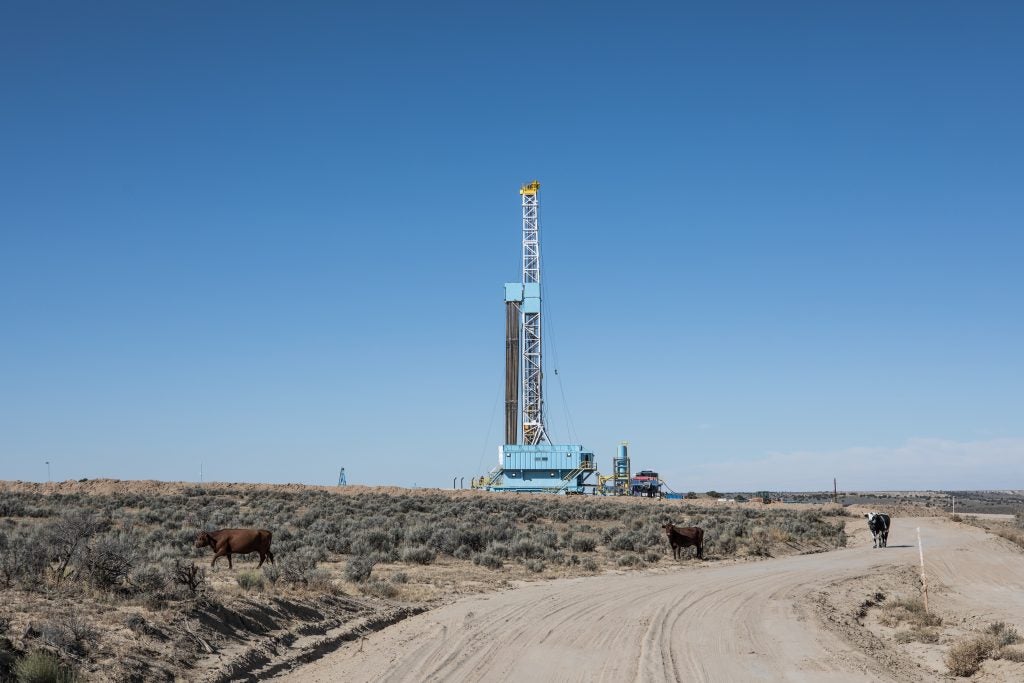By Matt Miccioli, EDF Stanford Schneider Fellow
A recent study of oil and gas methane emissions on the Navajo Nation reveals companies operating on tribal lands pollute 65 percent more than the national average, wasting millions in tribal resources every year and underscoring the opportunity for tribal leaders to reduce emissions.
The analysis, conducted by Environmental Defense Fund and released in conjunction with Grand Canyon Trust, Dinè CARE and Native American Voters Alliance, quantifies the volume of natural gas burned off, vented or leaked from oil and gas production on Navajo lands. It found that companies are wasting about 5.2 percent of their natural gas, generating about 13,000 tons of methane pollution.
These emissions not only drive climate damage, they also negatively impact the local economy. The natural gas lost on tribal lands is valued at about $3.4 million per year and causes the Navajo Nation, where 38 percent of residents live in poverty, to lose up to $850,000 a year in royalty revenue.
A longstanding problem in the Four Corners
Methane has made headlines in New Mexico and across the Four Corners region ever since a NASA satellite survey first identified a methane hotspot – the largest of its kind in the country and the size of Delaware – over the San Juan Basin of northwestern New Mexico in 2014. In subsequent years, additional scientific investigation has confirmed that the area’s emissions primarily stem from oil and gas production.
The oil and gas operators producing from Navajo Nation lands are no exception to the trend of significant waste. And this emissions problem also creates a major climate concern since methane is responsible for about 25 percent of the global warming we experience today.
Neglectful oil and gas production management also creates a serious health problem for local communities. Methane is the main component of natural gas, but emissions from oil and gas production also contain toxic gases like hydrogen sulfide, toluene, xylene and benzene, as well as volatile organic compounds (VOCs) which are precursors to ozone, the main component of smog and an irritant that can harm the respiratory system.
This is particularly relevant for the Navajo Nation, as San Juan County, N.M. is close to surpassing health safety limits on ozone pollution.
An opportunity for the Navajo Nation
Through the creation of thoughtful environmental policy, the Navajo Nation has been able to exercise tribal sovereignty and fight against damaging practices on its land. The Navajo Nation Environmental Protection Agency (NNEPA) is in the process of furthering those efforts again by considering the adoption of an air permitting program that could significantly reduce this oil and gas methane pollution and waste problem.
The high pollution levels in the Navajo Nation make it clear that the NNEPA should use its authority to crack down on these emissions, especially as national efforts to do so are dismantled by the current administration.
Limiting natural gas waste represents a straightforward continuation of the Navajo Nation’s strong record of responsible resource management. Even as the BLM Methane Waste Rule and EPA Methane Rule fall prey to the Trump administration’s misguided rollbacks, the Navajo Nation has the opportunity to reaffirm its commitment to the health of its people, its resources and its ability to curtail a potent source of greenhouse gases.
Report reveals heavy burden of energy waste, methane emissions on Navajo communities Share on X










